Homepage / News Details
The value of water
- Categroy:News
- Author:
- Origin:
- Release Time:2019-07-23 11:25
- Views:
【Summary】Chlorine is a strong oxidant that rapidly kills many harmful micro-organisms. Because chlorine is a toxic gas, there is a danger of a release associated with its use. This problem can be avoided by th
The value of water
【Summary】Chlorine is a strong oxidant that rapidly kills many harmful micro-organisms. Because chlorine is a toxic gas, there is a danger of a release associated with its use. This problem can be avoided by th
- Categroy:News
- Author:
- Origin:
- Release Time:2019-07-23 11:25
- Views:
The value of water
Sources of water
Further information: Water supply
1. Groundwater: The water emerging from some deep ground water may have fallen as rain many tens, hundreds, or thousands of years ago. Soil and rock layers naturally filter the ground water to a high degree of clarity and often, it does not require additional treatment besides adding chlorine or chloramines as secondary disinfectants.
2. Upland lakes and reservoirs: Typically located in the headwaters of river systems. But some bacteria, protozoa or algae will be present. Where uplands are forested or peaty, humic acids can colour the water. Many upland sources have low pH which require adjustment.
3. Rivers, canals and low land reservoirs: Low land surface waters will have a significant bacterial load and may also contain algae, suspended solids and a variety of dissolved constituents.
4. Atmospheric water generation is a new technology that can provide high quality drinking water by extracting water from the air by cooling the air and thus condensing water vapor.
5. Rainwater harvesting or fog collection which collect water from the atmosphere can be used especially in areas with significant dry seasons and in areas which experience fog even when there is little rain.
6. Desalination of seawater by distillation or reverse osmosis.
7. Surface Water: Freshwater bodies that are open to the atmosphere and are not designated as groundwater are termed surface waters.

Water purification is the process of removing undesirable chemicals, biological contaminants, suspended solids, and gases from water. The goal is to produce water fit for specific purposes. Water purification may reduce the concentration of particulate matter including suspended particles, parasites, bacteria, algae, viruses, and fungi as well as reduce the concentration of a range of dissolved and particulate matter.
According to a 2007 World Health Organization (WHO) report, 1.1 billion people lack access to an improved drinking water supply; 88% of the 4 billion annual cases of diarrheal disease are attributed to unsafe water and inadequate sanitation and hygiene, while 1.8 million people die from diarrheal disease each year. The WHO estimates that 94% of these diarrheal disease cases are preventable through modifications to the environment, including access to safe water. Simple techniques for treating water at home, such as chlorination, filters, and solar disinfection, and for storing it in safe containers could save a huge number of lives each year.
Chlorine disinfection
Chlorine is a strong oxidant that rapidly kills many harmful micro-organisms. Because chlorine is a toxic gas, there is a danger of a release associated with its use. This problem can be avoided by the use of calcium hypochlorite, which is a relatively safe and effective disinfectant.
Releate News

Time of issue : 2024-04-15 16:52:27

Time of issue : 2024-04-09 10:13:04

Time of issue : 2024-04-01 17:10:12
CONTACT US
PRODUCTS
CALCIUM HYPOCHLORITE
TCCA
SDIC
BCDMH
FEEDBACK
© 1999-2018 北京网站建设有限公司 Copyright © 2012-2022 All Rights Reserved Powered by www.300.cn 冀ICP备12012949号 津公网安备 12010302002173号 Seo tag

